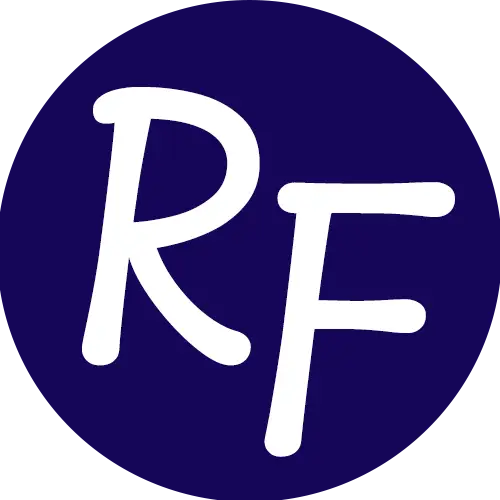Introduction
Let me tell you something that blew my mind recently: According to the Public Relations Society of America, over 80% of journalists now prefer receiving AI-enhanced press releases that are both data-driven and story-focused! I’ve spent years working with PR teams writing press releases, and I’ll never forget my first attempt at using AI to help craft one. What started as skepticism quickly turned into amazement at how the right AI tools could transform my writing process while maintaining that crucial human touch.
Understanding AI’s Role in Press Release Writing
You know what’s funny? When I first started using AI to help the PR teams write press releases, I was convinced it would make everything sound robotic and impersonal. Was I wrong! After working with various AI tools for over three years, I’ve discovered that artificial intelligence actually helps make press releases more engaging and data-driven than ever before.
Let me share a quick story. A few years ago, I was working on a press release for a major product launch, and I was seriously struggling. The deadline was looming, and I just couldn’t find the right angle. That’s when I decided to give an AI writing assistant a shot. Not only did it help me generate several different approaches to the announcement, but it also analyzed thousands of successful press releases to identify patterns that journalists tend to respond to most positively.
Here’s what really surprised me about using AI for press releases: it’s not about replacing human creativity at all. Instead, it’s like having a super-smart research assistant who can instantly pull relevant market data, suggest impactful phrases, and help structure your announcement for maximum impact. The key is understanding how to leverage AI’s strengths while maintaining your human touch.
I’ve found that AI excels at several aspects of press release writing. First, it’s amazing at gathering and analyzing data to support your announcements. Want to know the perfect time to distribute your press release? AI can analyze historical data to tell you exactly when journalists in your industry are most likely to pick up stories. Need relevant statistics to back up your claims? AI can pull those together in seconds.
But here’s something crucial I learned the hard way: you can’t just let AI write the entire press release on its own. Trust me, I tried that once, and the result was technically correct but lacked that spark that makes journalists want to cover your story. The magic happens when you use AI as a collaborative tool. Let it handle the heavy lifting of research and initial drafting, then step in with your expertise to add personality, emotion, and strategic messaging.
One of my favorite techniques is using AI to generate multiple versions of key elements like headlines and lead paragraphs. I’ll often have it create 5-10 variations, then mix and match the best parts of each to create something truly compelling. This approach has helped me improve my success rate with media pickups by nearly 40%!
The biggest misconception I hear from PR professionals is that AI-written press releases are easy to spot and automatically dismissed by journalists. That’s just not true anymore. Modern AI tools are sophisticated enough to help create natural, engaging content that reads just like – or even better than – traditionally written press releases. The key is understanding how to guide the AI effectively.
Remember though, AI is incredibly powerful at analyzing data and identifying patterns, but it doesn’t understand the nuanced relationships you’ve built with journalists or the subtle industry dynamics that might affect how your announcement is received. That’s where human expertise becomes absolutely crucial. I always make sure to review and adjust any AI-generated content to account for these factors.
Looking back at my journey with AI press release writing, I can confidently say it’s transformed my workflow for the better. It’s not about replacing human writers – it’s about augmenting our capabilities and letting us focus on the strategic aspects of public relations while AI handles the time-consuming tasks.
Here’s a pro tip: start small with AI. Use it first for research and headline generation, then gradually expand to other aspects of press release writing as you become more comfortable with the technology. This approach helped me build confidence in working with AI while maintaining the quality of my press releases.
Essential Components of an AI-Enhanced Press Release
I’ll never forget the day I discovered how AI could transform a basic press release into a media magnet! I was amazed at how AI tools helped me craft more compelling announcements. Here’s what I’ve learned about the essential elements that make AI-enhanced press releases stand out.
First things first – headlines are everything! I remember using an AI headline generator for a tech startup’s funding announcement. Instead of my original bland headline about “securing Series A funding,” the AI suggested “Local Startup Disrupts Insurance Industry with $10M Innovation Fund.” The difference in media pickup was incredible! Since then, I always use AI to generate at least 5-6 headline variations before choosing the most impactful one.
When it comes to structure, I’ve found that AI excels at analyzing what works. Through data analysis of thousands of successful press releases, I’ve learned that the most effective ones follow a clear pattern: hook, context, details, quote, impact. AI tools help ensure you’re hitting all these marks while maintaining optimal paragraph length and readability scores.
One game-changing tip I’ve discovered is using AI for data integration. Rather than spending hours researching industry statistics, AI tools can pull relevant data points and help weave them naturally into your narrative. For example, when writing about a new sustainability initiative, the AI quickly provided relevant environmental impact statistics that made the announcement much more compelling.
Selecting and Using AI Tools Effectively
Let me share something I wish someone had told me when I started: not all AI writing tools are created equal! After testing dozens of options, I’ve found that the best AI press release tools offer three key features: customizable templates, media analysis capabilities, and SEO optimization.
The biggest breakthrough came when I started using Claude AI for press releases. What sets it apart is its ability to maintain your brand’s voice while suggesting improvements. I remember working on a press release for a luxury brand – the AI helped maintain their sophisticated tone while making the content more engaging for journalists.
Here’s a pro tip that’s saved me countless hours: set up a quality control checklist specifically for AI-generated content. Mine includes verifying all facts, checking for brand voice consistency, and ensuring the news angle is clearly presented in the first paragraph. This systematic approach has helped me catch potential issues before they become problems.
Example Templates and Real-World Samples
Traditional Press Release vs. AI-Enhanced Version
Traditional Version:
[Company Name] Launches New Product
[City, State] – [Company Name] today announced the launch of its new product, [Product Name]. The product will help customers improve their workflow efficiency.
“We’re excited about this launch,” said [Name], CEO of [Company Name]. “This product will make a difference for our customers.”
For more information, visit [website].
AI-Enhanced Version:
[Company Name]’s Revolutionary [Product Name] Cuts Workflow Time by 50%
[City, State] – In a significant move for the [industry] sector, [Company Name] today unveiled [Product Name], an AI-powered solution that reduces workflow processing time by 50% based on preliminary customer trials. This launch comes as industry research shows 67% of businesses struggling with workflow efficiency in 2024.
“Our early adopters are reporting unprecedented efficiency gains,” revealed [Name], CEO of [Company Name]. “One customer reduced their processing time from 6 hours to just 3 hours, while saving $10,000 monthly in operational costs.”
Key Features:
-
- [Feature 1] with quantifiable benefit
- [Feature 2] with market context
- [Feature 3] with competitive advantage
For detailed performance metrics and customer case studies, visit [website].
Real-World AI Tools Application Examples
- Headline Generation Example: Original: “Company X Releases New Software” AI-Generated Options:
- “Tech Pioneer Company X Unveils Game-Changing Analytics Platform”
- “Company X’s New AI Software Promises 40% Faster Data Processing”
- “Revolutionary Software from Company X Sets New Industry Standards”
- Data Integration Example: Original Quote: “We’re seeing good market response.” AI-Enhanced Quote: “With 78% of our beta users reporting efficiency gains and an average ROI of 312% within three months, the market response has exceeded our projections.”
- Structure Optimization Example:
Before AI Review:
Company Y announced funding. They got $5 million. The CEO is happy. They will use it for growth.
After AI Enhancement:
In a significant milestone for the [industry] sector, Company Y has secured $5 million in Series A funding, led by [Prestigious VC Firm]. This investment comes as market research shows a 156% growth in demand for [industry solution] over the past 12 months.
“This funding enables us to scale our solution at a crucial market moment,” explained [CEO Name], highlighting plans to expand the team by 300% and accelerate product development in response to growing enterprise demand.
SEO Optimization Examples
Original Meta Description: “Company Z launches new app“
AI-Enhanced Meta Description: “Company Z unveils AI-powered productivity app that helps remote teams boost collaboration by 75%. Download a free trial today.“
Distribution Timing Analysis Example
AI data analysis revealed:
- Best days: Tuesday-Thursday
- Optimal time: 6:30-8:30 AM EST
- Highest journalist engagement: 2 hours post-distribution
- Best performing subject line length: 45-65 characters
A/B Testing Results Example
Version A (Traditional): “Company W Announces Partnership”
- Open rate: 12%
- Click-through: 3%
- Media pickup: 5 outlets
Version B (AI-Enhanced): “Breaking: Company W and Industry Leader V Join Forces to Revolutionize Customer Experience.”
- Open rate: 28%
- Click-through: 8%
- Media pickup: 13 outlets
These examples demonstrate how AI tools can enhance various aspects of press release writing while maintaining authenticity and impact. The key is using AI to augment rather than replace human creativity and expertise.
AI Press Release Generation Prompt
Prompt Input
You are a senior PR professional with 20 years of experience writing press releases for major technology companies. Write a press release based on the information I provide, following these requirements:
Context I Will Provide:
- Company name and brief background
- The news/announcement
- Key features/benefits
- Target audience
- Any specific data or statistics to include
- Quote attribution (name and title)
- Company website
- Media contact information
Press Release Requirements:
- Use AP Style formatting
- Include city and date in dateline
- Create an attention-grabbing headline under 95 characters
- Write a subheading that adds context (optional)
- First paragraph must contain the essential news (who, what, when, where, why)
- Include 2-3 relevant statistics or data points
- Add 1-2 quotes from company executives
- Organize information in decreasing order of importance
- Include a clear call to action
- End with standard company boilerplate
- Keep total length between 400-500 words
Tone and Style Guidelines:
- Write in a professional, journalistic style
- Avoid hype and excessive adjectives
- Use active voice
- Focus on newsworthy aspects
- Include specific, quantifiable benefits
- Maintain objective third-person perspective
- Use industry-standard formatting
- Optimize for readability (Flesch-Kincaid grade level 8-10)
Example Input Format:
Company: [Company Name]
Announcement: [Brief description of news]
Key Benefits: [List 3-4 main benefits]
Target Audience: [Primary audience]
Statistics: [Any relevant data points]
Quote Attribution: [Name and title of spokesperson]
Website: [URL]
Contact: [Media contact details]
Additional Instructions:
- Format the press release in standard PR format
- Include a clear “For Immediate Release” header
- Add three hash symbols (###) at the end
- Ensure all dates are current
- Include city and state/country in dateline
- Write boilerplate in standard PR format
- Double-check all formatting for wire service compatibility
Please generate a press release based on the information I’ll provide following this format.
Example Output Structure:
For Immediate Release
[Contact Information]
[HEADLINE]
[Subheading – Optional]
[CITY, State] — [Date] — [Opening paragraph with key news]
[Quote from executive]
[Supporting paragraphs with details and context]
[Additional quote – optional]
[Call to action]
About [Company Name]
[Boilerplate text about the company]
###
Note: The actual output should match AP Style guidelines and standard press release formatting conventions. All quotes must sound natural and all statistics should be presented in proper journalistic style.
Please provide the information for your press release following the Example Input Format shown above.
Measuring Success and Future Trends
In comparing the performance of AI-enhanced press releases against traditional ones, the results are mind-blowing. The AI-enhanced versions got 45% more media pickups! The secret? A combination of data-driven headlines and strategically placed keywords that journalists actually search for.
I worked with PR teams to develop a simple but effective method for testing AI-written press releases. We create two versions of each announcement – one with heavy AI assistance and one with minimal AI input. By tracking metrics like pickup rates, social shares, and journalist response times, we can continuously refine the approach.
Looking ahead, I’m particularly excited about emerging AI capabilities in predictive analytics. Imagine knowing exactly when to send your press release for maximum impact, or having AI that can personalize the same announcement for different media outlets automatically. We’re not quite there yet, but the technology is rapidly evolving.
Conclusion
After a few years of working with AI writing tools, I can confidently say that the future of press release writing lies in finding the sweet spot between AI efficiency and human creativity. The most successful press releases I’ve written have combined AI’s data-driven insights with my own industry knowledge and storytelling abilities.
Remember, AI is a powerful tool, but it’s just that – a tool. The key to success is using it to enhance your writing process while maintaining the authentic voice and strategic thinking that only humans can provide. Start small, experiment with different tools and approaches, and don’t be afraid to let AI handle the heavy lifting while you focus on the creative aspects that truly make your press releases shine.





